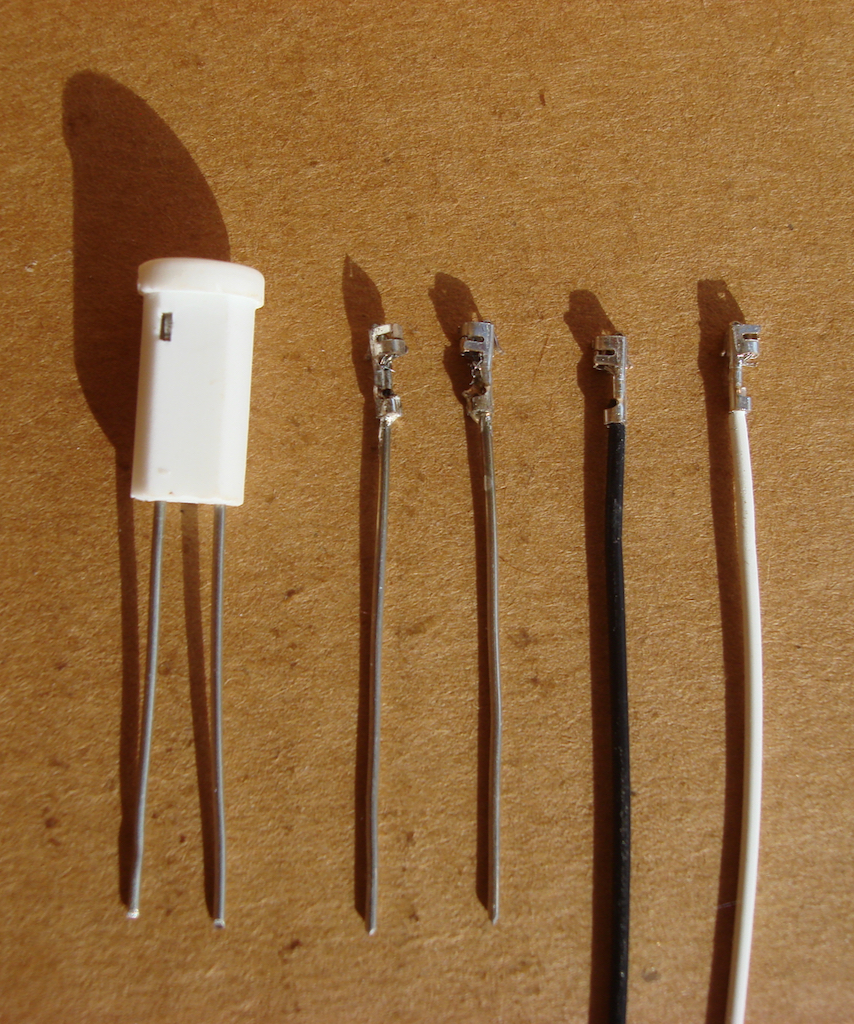The ceramic sockets linked to I'm unsure that they are still the heat safe (Teflon insulated?) ones so id like to check that I have the right ones. Chatter in this thread indicated that the safe ones usually have blue and brown wires, the ones I got had black and white wires. You guys talked about a flame test which I tried but I'm not sure how to evaluate the result lol. Using a cigarette lighter (not a jet flame) the insulation does not catch fire, it does char badly and turns brittle and sharp though within a few seconds. I've gone through a couple of the bulb holders, on one occasion I had a sharp piece of the heater cover cause a short, the other time was also a short, but it seemed to happen inside the holder itself when I moved the unit when it was hot.
Welcome to the thread
 Nope! The colouring of the insulation itself is no indicator at all, for what type of insulation is used!
Nope! The colouring of the insulation itself is no indicator at all, for what type of insulation is used! That the 'good ones' in this case were blue and brown and the 'bad ones' black and white is purely incidental. Next time, they may be red and blue

Also, most of this stuff comes from China and so the main theme when buying from Amazon, Ebay and the like is confusion, as most of these Chinese sellers do either not know or do not care, what exactly they are offering there, when it comes to the tech specs and so quality differs widely. Make sure, it says 'Teflon' or PTFE in the description at least, but always make a burn test yourself. Generally speaking, there are two kinds of insulation used:
Low temp insulation (probably low grade silicone) for G4 sockets intended for use with LEDs, which don't emit much heat at all.
And high temp insulation for use of G4 sockets intended for halogen bulbs.
German VDE norm for high temp insulation demands ETFE or similar. In short: 'Teflon' is just the brand name for PTFE, when it was discovered and there are a couple of PTFE derivates, like FEP, FPA and ETFE, which are nowadays commonly used for high temp insulation in electronics and also in part fall under the 'Teflon' brand name, like 'Teflon FEP' for instance. These derivates all have in common, that they are easier to process than actual PTFE in manufacturing and have better mechanical properties (PTFE is brittle as hell). On the other hand, they all have a slightly lower temp resistance than PTFE itself. Melting point around 250-270°C compared to the 320°C of PTFE. Working temp range is up to 204°C for ETFE and FEP, or 180°C with a safety margin, which should be all fine for our purposes, as we are miles away from these temps, where the wiring in the base cavity of the Log is concerned.
Both materials should not differ much from PTFE, when doing the burn test, in that they'll blacken and decompose eventually under a hot flame (your usual flame is about 1.300°C and PTFE melts at ~320°C already), but there should be no or very little flames visible. In short: no combustion!
Here's how that looks like. Soft flame or jet flame shouldn't matter much. Hottest (blue) part of the flame should be around 1.300°C for both.
Take care, not to inhale the gasses from the burned Teflon! They're highly toxic at those high temps!
Safest way is simply to invest maybe a few quid more and buy from a renown tech and components outlet instead. There you can be reasonable sure, that you actually get, what it says on the tin

Look for the VDE seal.
https://sinolec.co.uk/en/low-voltag...s/1211347-g4-ceramic-ceramic-lamp-holder.html
@brainiac got himself a batch and took a pic of the wiring. The VDE Reg Nr. is: 7599, which I looked up and that is indeed registered for Teflon-FEP high temp wiring, up to T 180°C. Click to enhance!
As for the short outs... well, shit just happens

Fought with a halo unit only yesterday here. One evening it would light up fine and work the whole night w/o issues; the next day it would remain dark and cold, after I plugged it in

Quick shake or a tap with my finger against the side of the body would remedy that, but only temporary.
Reseated the bulb, checked all the wiring and soldering points: all fine! Finally exchanged the bulb... but no cigar.
Took it apart again... and finally one of the wires slipped out of the ceramic housing of the socket, after a very slight pull. Contact inside the socket itself was broken!
Exchanged the socket and put it together again, set it to its usual 10.5V/8w... and was rewarded with the 'burning times' instead

Jeez... must have combusted three or four times in a row. Whole flat stank, like back in the good old days of me long past youth

When I still combusted at a mere 9.5V... I finally sighed and took the little bugger apart again. Genius here had managed to accidentally push the bulb about 5mm further up into the heater cover, when reassembling the unit last, so that it was much too close to the load
 ETA:
ETA: Got my initial batch of sockets from the seller 'Blue XP' via Amazon too and they turned out ok (the one you see in the vid is from that batch). But note, what I said before re varying quality. This holds true, even with the same seller! One batch might be ok and the very next you order, turns out a turd

So better go with Sinolec or something similar.












 and keep us informed on your progress.
and keep us informed on your progress.



















